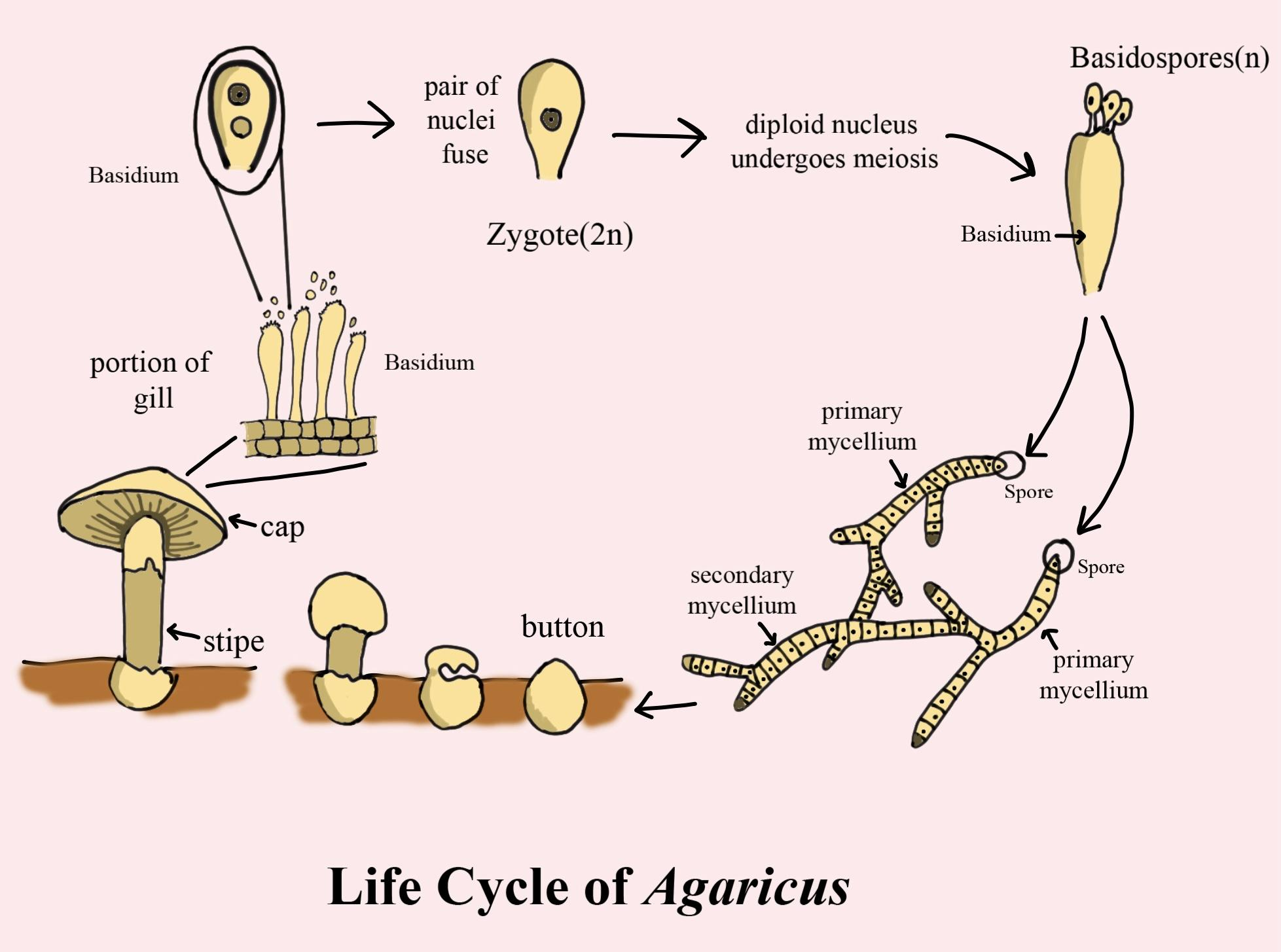Agaricus, often referred to as “meadow mushrooms,” are a type of edible fungi that belong to the Agaricaceae family. These mushrooms have a diverse range of uses in the food industry and have been cultivated for centuries. Understanding the life cycle of these mushrooms is crucial for efficient cultivation and harvesting.
The life cycle of Agaricus can be divided into four stages: spore germination, mycelium growth, fruiting body formation, and spore dispersal. In this article, we will discuss each stage in detail, including the processes involved and the environmental factors that can affect the growth of Agaricus.
1. Spore Germination
The first stage in the life cycle of agaricus is the germination of spores. Like all fungi, agaricus reproduce through spores, which are small, single-celled structures. Spores are released from the gills of mature fruiting bodies and are dispersed by wind or water.
When a spore lands on a suitable substrate, such as organic matter, it begins to germinate. The spore absorbs water and breaks down its cell wall, allowing the contents of the spore to grow and form the first mycelium cells.
The process of spore germination is influenced by several environmental factors, such as temperature, humidity, and soil pH. The optimal temperature for spore germination is between 20°C and 27°C, and a humidity of around 80% is required for successful germination. The pH of the substrate should be slightly acidic, with a range of 5.5 to 6.5 being ideal.
2. Mycelium Growth
Once the spores have germinated, the next stage in the life cycle of agaricus is mycelium growth. Mycelium are long, thin cells that form a network throughout the substrate. This network is called the mycelial mat and is the feeding structure of the mushroom.
The mycelium grows by absorbing nutrients and breaking down organic matter. The process is facilitated by enzymes secreted by the mycelium cells. As the mycelial mat grows, it expands outward in search of more nutrients. This stage can last from one to several weeks, depending on factors such as temperature and substrate type.
During mycelium growth, it is important to maintain optimal environmental conditions. The temperature should be kept between 20°C and 27°C, with a humidity of 80% to 90%. The substrate should also be well-aerated and have adequate levels of nitrogen and carbon.
3. Fruiting Body Formation
The third stage in the life cycle of agaricus is the formation of the fruiting body. The fruiting body is the part of the mushroom that we see above ground and is responsible for spore production. Fruiting body formation occurs when the mycelium has accumulated enough nutrients to support a reproductive structure.
Several factors contribute to the formation of the fruiting body, including light, temperature, humidity, and carbon dioxide levels. Agaricus require a dark period of about 12 hours to initiate fruiting body formation. The ideal temperature for fruiting body formation is between 15°C and 24°C, and a humidity of around 90% is required for successful fruiting. Carbon dioxide levels should be kept low to prevent stunted fruiting body formation.
During the fruiting body formation stage, care must be taken to provide adequate ventilation to avoid stagnant air and the buildup of carbon dioxide. The substrate should also be moist but not waterlogged, as excessive moisture can lead to bacterial and fungal infections.
4. Spore Dispersal
The final stage in the life cycle of agaricus is spore dispersal. The mature fruiting body produces millions of spores that are dispersed by wind or water. The spores can then germinate and begin the cycle anew.
Environmental factors play a crucial role in spore dispersal. Wind speed and direction, humidity, and temperature can all affect the dispersal of spores. Ideal conditions for spore dispersal are a moderate wind speed and humidity, with temperatures above 15°C.
Conclusion
Understanding the life cycle of Agaricus is essential for successful cultivation and harvesting. Ensuring optimal environmental conditions at each stage of the life cycle is crucial for healthy growth and the production of a high-quality crop. By following the guidelines outlined above, cultivators can maximize yield and quality while minimizing the risk of disease and contamination. The life cycle of agaricus is a fascinating process, and a deeper understanding of this cycle can improve our ability to harness the power of fungi for food production and other applications.

